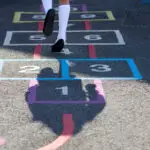Give your child the best possible chance of success. A high-quality education helps make that happen. Learn how to pick the best primary school to support your child’s future.
Parents want the best school for their kids. But if you have only recently moved to the country, it can be a bit of a struggle to figure out where to look, how to get started, and what resources are available to you. With a list of factors to consider, you can winnow through your options much easier.
Here is a list that you will want to keep in mind before you start checking out your options.
Admissions and Requirements
What are the educational requirements of the school? Are your kids eligible? If the school has a waiting list, how long is that list? Also, does the school accept students who transfer in the middle of the academic school year? If your kids cannot meet that condition or any other, then you will need to look at other options.
Curriculum
Which schools offer a curriculum that is the same as the schools in your home country? If you are going to bring back your kids in a few years, then it might be best to enrol them in a school that uses the same curriculum, whether that’s the CBSE curriculum or the GCSE curriculum. That way, your kids will have an easier time.
Faculty
Are the teachers qualified? What are their credentials? Are they experts in the subjects they teach? More than their professional qualifications and achievements, though, are they invested in the students? Do they like kids? Do they care about the children? That is one of the most important factors when you look for the best primary school. The teaching quality of a school depends a lot on the quality of its teaching staff. That is why it matters if the teachers have the capability as well as dedication to instruct your kids and provide guidance in their pursuit of academic growth and excellence.
Infrastructure
This is admittedly not as important for many parents. Given the shift to distance learning, it is safe to say that many students will still continue to receive their lessons at home through online sessions. However, a lot of schools are opening their doors for in-person classes. You will need to make a decision about that sooner or later. When you are comfortable enough with the thought of letting your children attend in-person classes, you’ll be much happier to know that your kids have access to facilities that support their classroom and even extracurricular activities.
Extracurriculars
Not every child is good in STEM subjects. If your children’s interests lie elsewhere, then it can be hard for them to shine in class. A school that offers extracurriculars, though, helps change that. By offering extracurricular courses or programmes that balance out the focus on STEM subjects, students can discover new talents or hone skill sets they already have. These extracurriculars give them the chance to show off their skills and shine. That helps build motivation, engagement, and self-confidence.
Learning Environment
What kind of learning environment does the school offer? Is it a supportive one? Do you see your kids thriving there? Or is the school’s atmosphere rigid? How do the teachers and students interact with each other? Are they relaxed? Are the students confident when they approach the teachers or are they scared? You will want to factor all these, too, before you decide.
Teaching Philosophy
What is the school’s teaching philosophy? Some schools rely on the traditional learning approach of having the teacher control the discussions while students passively listen in class. But some schools—like those that use a Montessori learning style—assign the role of facilitator to the teachers. They are not the centre of the discussion. Instead, they merely guide and steer the conversation along the right lines. The kids drive the conversation instead.
Learning Styles
What kind of learning styles do the teachers use? Are they aware that there are different types of learners? For instance, if your children are visual learners, then they benefit a lot from using visual aids whenever they need to study for a lesson. That improves their retention levels. Some kids are kinesthetic learners, though, in that they need to go through the motions and gestures to understand a concept or word better. A good teacher will know which approach to take and is flexible enough to reach out to each child using the learning style that is right for them.
Class Size
How many kids are in the class? If there are too many kids assigned to a single teacher, that is not a good scenario, since it will leave the teacher unable to devote much time and attention to every child. That is why many international schools have a small to medium-sized class. They also have teaching assistants to take on much of the load off the teacher. The teacher, then has more time to interact with the kids, give feedback and instruction, and generally be there for them if they ever need help at school.

